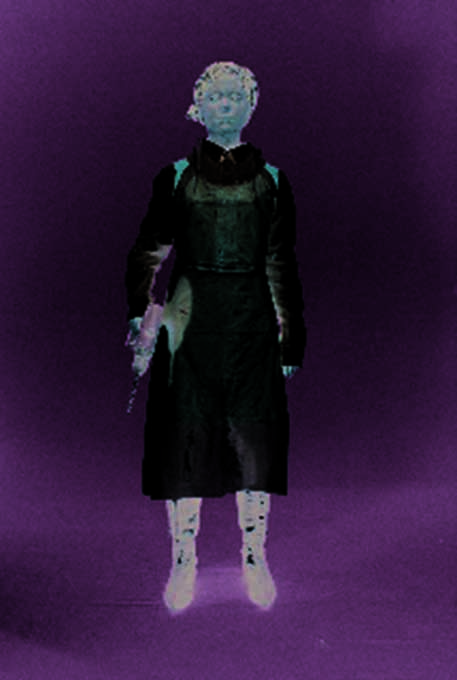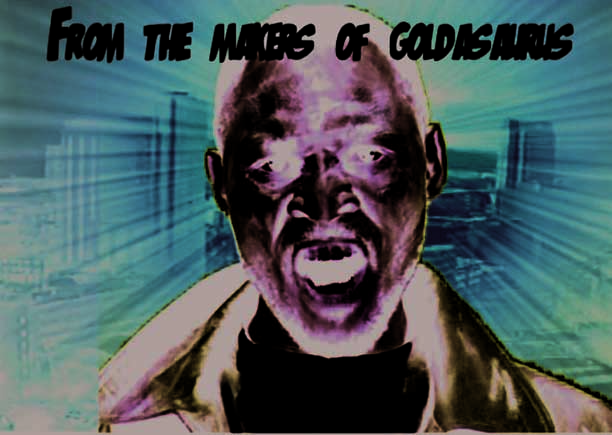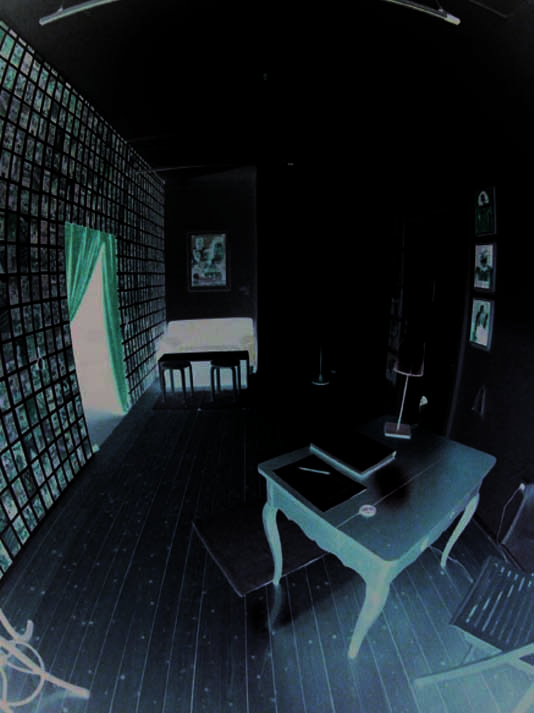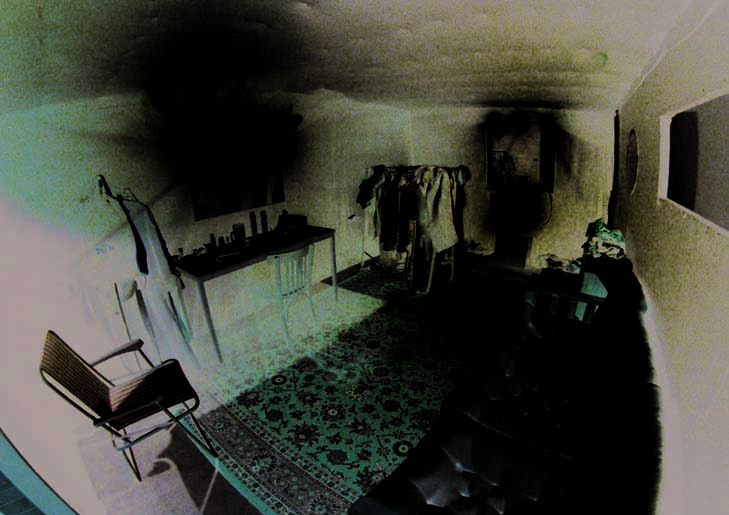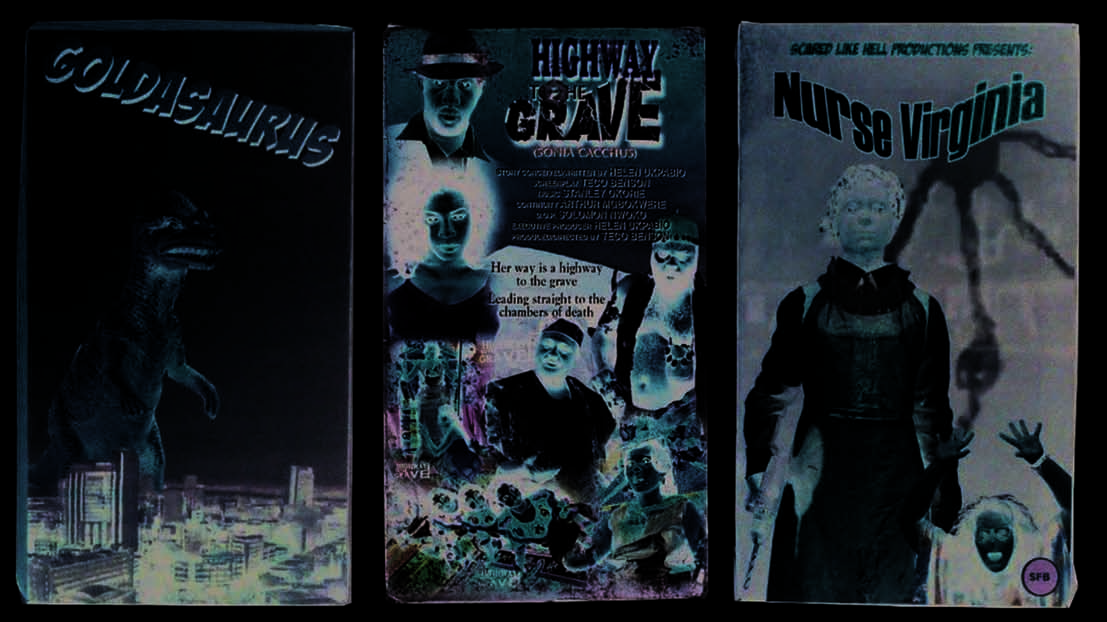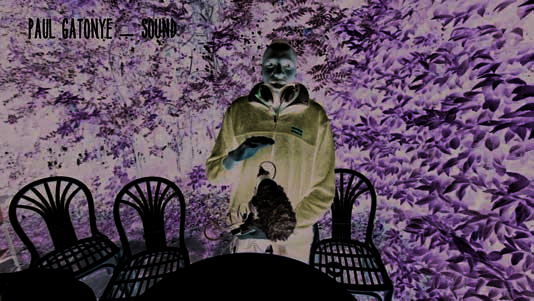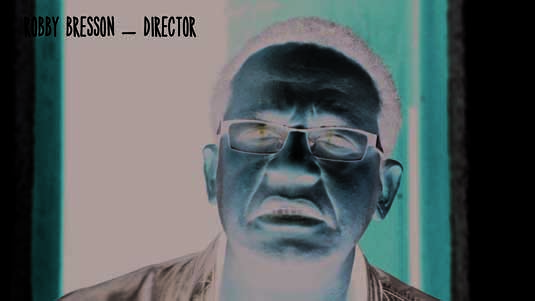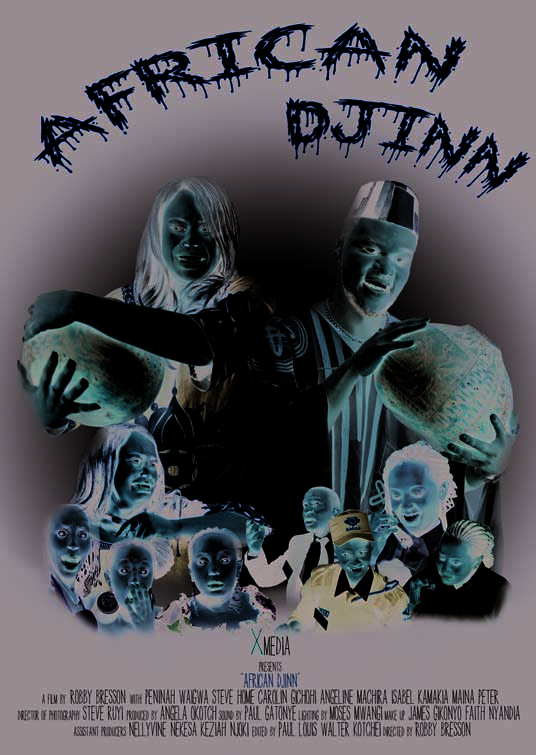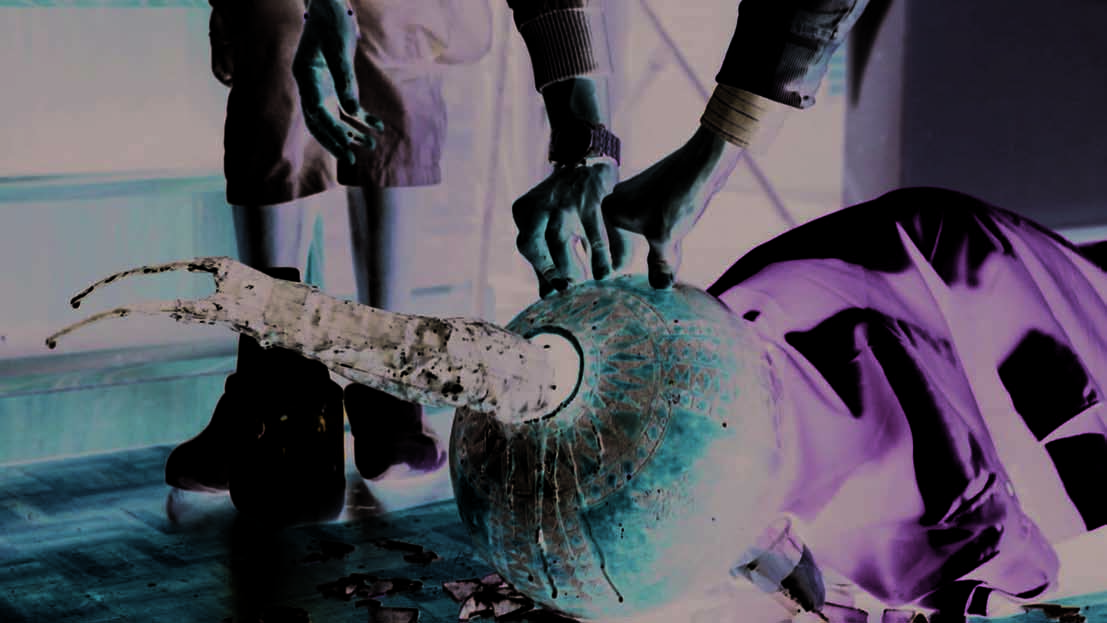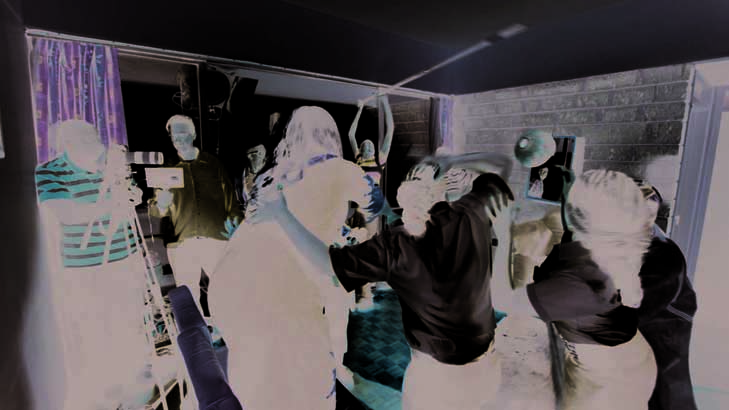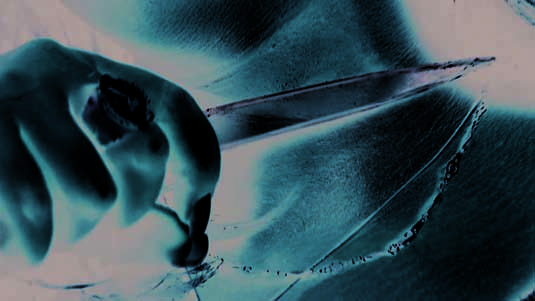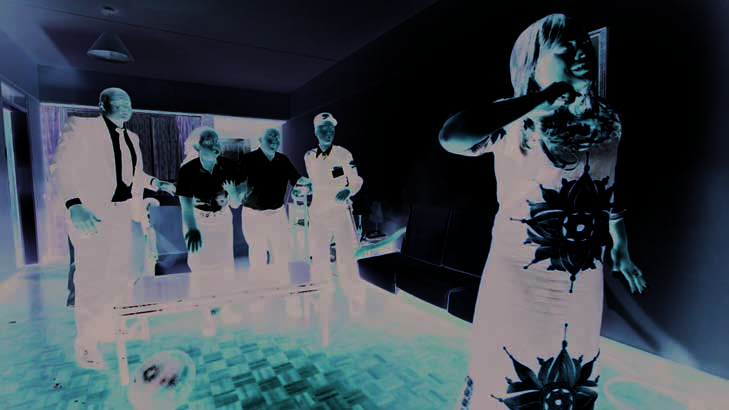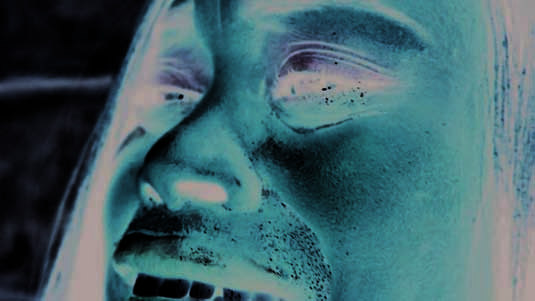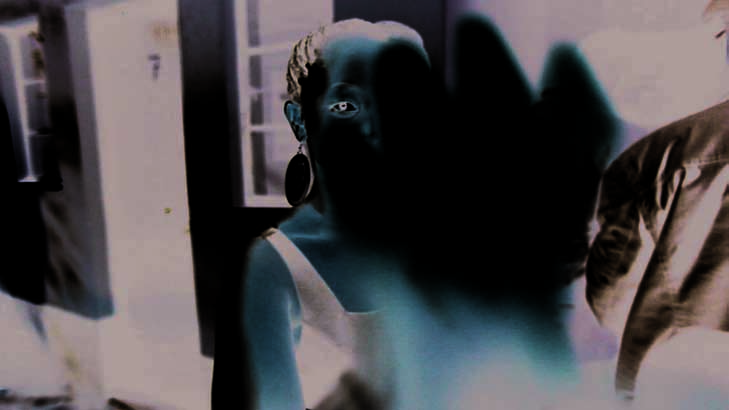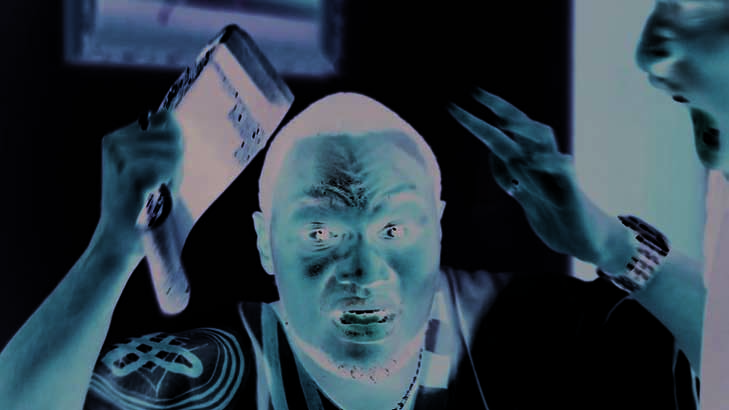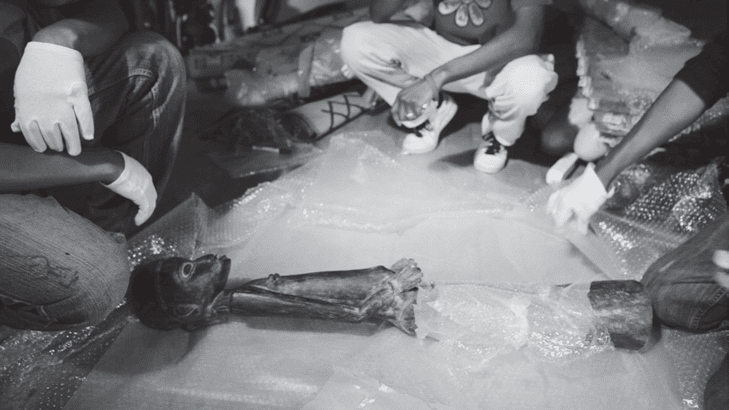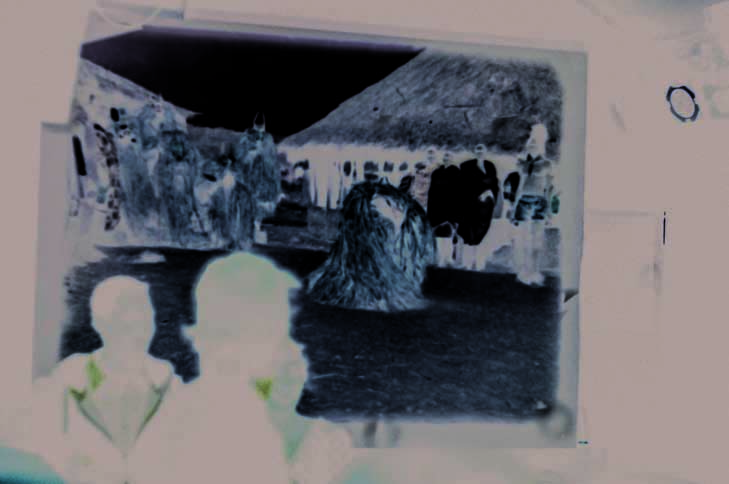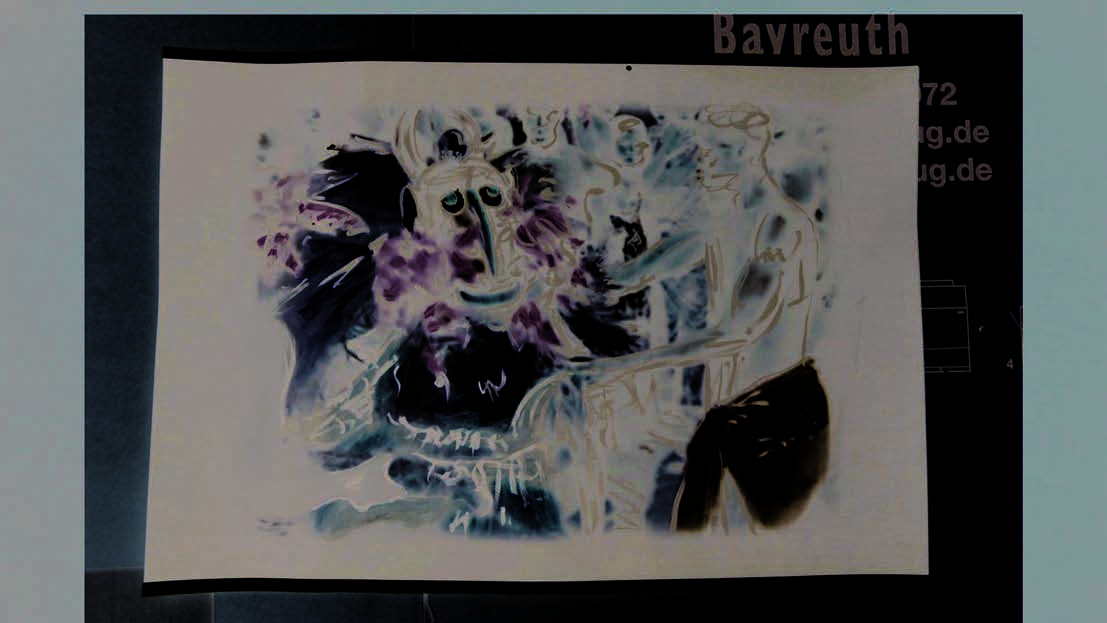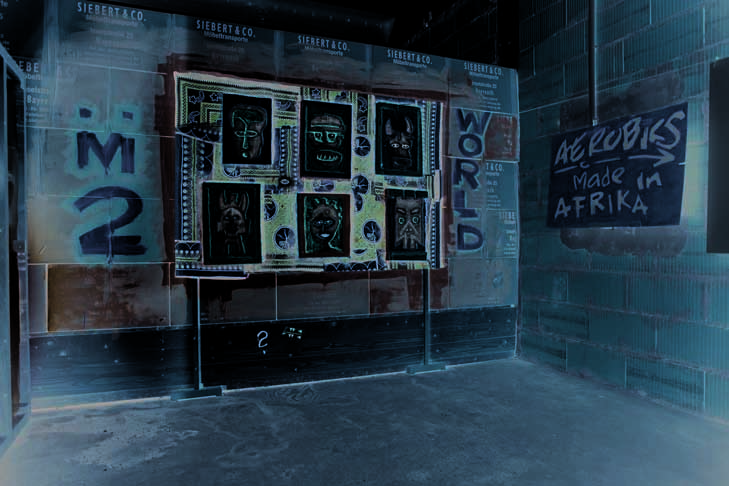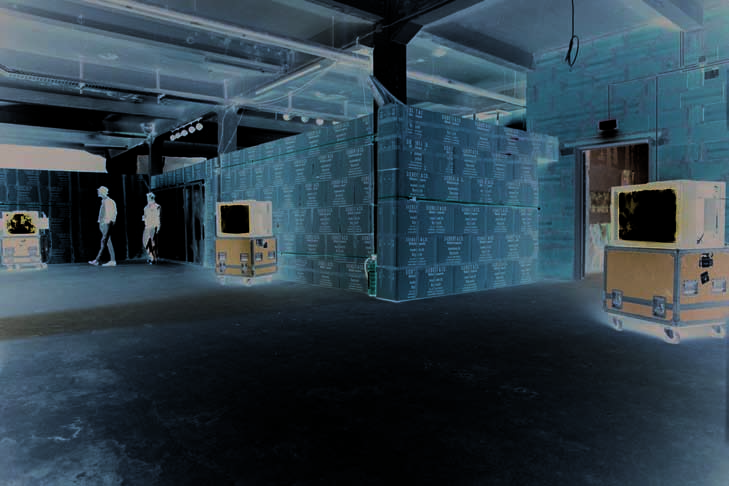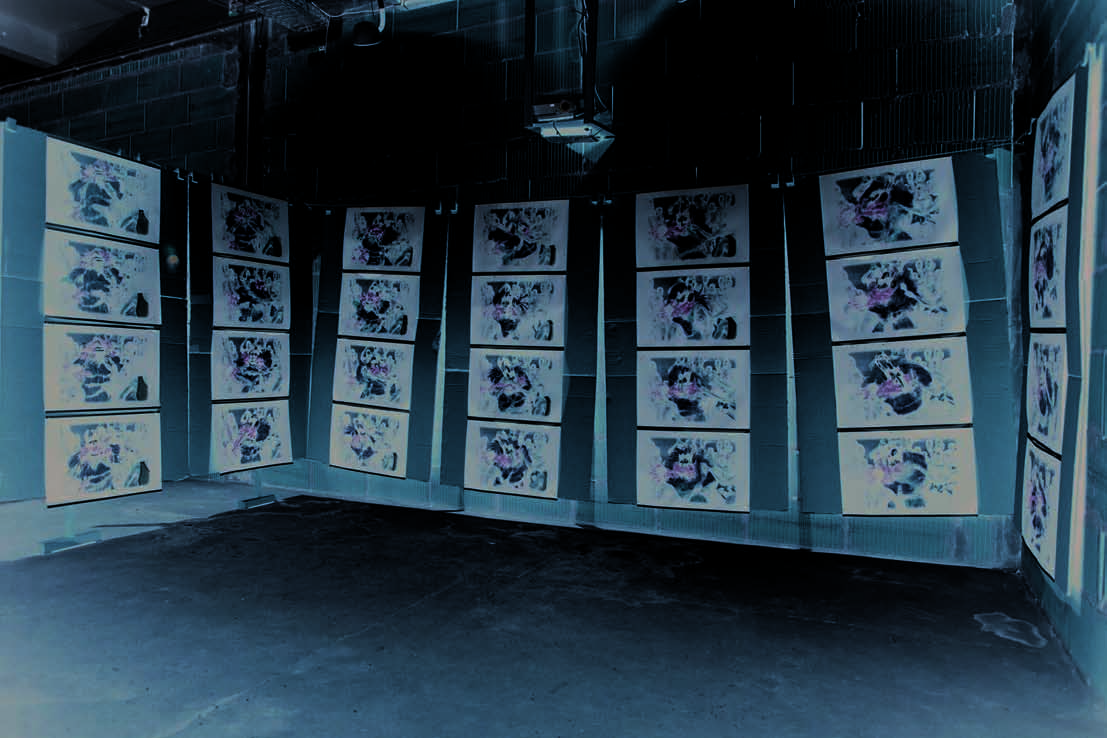Archive, Arte, and Anarchy
Challenging the Praxis of Collecting and Archiving:
From the Topological Archive to the Anarchic Archive
Ulf Vierke
all photos by Sam Hopkins
yo
D
oh
w
norte
oh
a
d
mi
d
F
r
oh
metro
h
t
t
pag
:
/
/
d
i
r
mi
C
t
.
metro
i
t
.
F
/
mi
d
tu
a
a
r
/
a
r
t
i
C
mi
–
pag
d
yo
F
/
/
/
/
/
4
8
2
1
2
1
7
3
6
3
0
5
a
a
r
_
a
_
0
0
2
1
7
pag
d
F
.
F
b
y
gramo
tu
mi
s
t
t
oh
norte
0
9
S
mi
pag
mi
metro
b
mi
r
2
0
2
3
This paper deals with critical perspectives on
the archive within the postcolonial and post
structural era. It draws upon an ongoing pro
gram of intervention by contemporary artists
from Africa within one of Germany’s major
archives in the field of African Studies—the
Iwalewahaus, Bayreuth University. It is neither the archival
object, nor the archival index that is questioned but rather the
archival process itself. Regarding three art projects by the Kenyan
artist Sam Hopkins, the text explores three distinct concepts of
the archive: the common institutional concept of archive, el
abstract Foucauldian idea, and the vision of an anarchic archive.
In his projects Not in the Title (2011), Not in the Title Too
(2013) and Mash Up the Archive (2013–2015) Hopkins critically
analyses existing orders within the contemporary museum and
archivo. The starting point for the first phase of the project is the
archive and the collections at Iwalewahaus, the center for con
temporary art at Bayreuth University, Alemania. As a paradigm
the artist chose a collection of Nollywood horror videos: Iwale
wahaus holds a body of approximately 200 video tapes that were
collected mainly by Prof. Onookome Okome in the late 1990s.1
In reaction to his research in the archive, Hopkins produced
“fake” Nigerian film trailers (Higo. 1) with amateur actors from
Bayreuth.2 The production site—a green screen studio (Higo. 2)
and a dressing room (Higo. 4)—was completed by a small cinema
(Higo. 3) and became part of the exhibition as the last stage of the
first phase of the project and at the same time the freshly pro
duced videos (Higo. 5) were inserted into the archive of Iwalewa
haus. The archive’s metadata would reveal the artist as producer,
Bayreuth as place of production, etc.3
Not in the Title questions the archive in its institutional sense.
As an intervention within the museum it sheds light on museum
and archival praxis, the role objects play as art works and archi
val goods. The spectator may question what is authentic, qué
is a copy, and what is fake. But instead of providing answers to
these questions, the project disturbs the notion of the originality
of the archival object. Observing the perception both within the
institution and by the exhibition audience then leads to ques
tions about cultural memory in Africa, the European archive,
and the production and reception of the art works. The archive
as a theoretical concept came into play, and led to the next phase,
Not in the Title Too.
Not in the Title Too sets out as a film project based in Nairobi,
Kenya, and as an exhibition in Bordeaux, Francia. Once again a
“fake” Nollywood movie was produced, this time on the African
continent in Nairobi with local actors from the Riverwood film
studios.4 This time, the artwork was a professional film project:
Kenyan film director Robbie Bresson (Higo. 6) was commissioned
to produce a movie trailer for a Nigerian horror film. Working
with a Kenyan cast and crew, Bresson adapted a script he had
written earlier to produce African D’Jinn. Though Hopkins and
Bresson talk about a movie trailer, the seventeenminute film
seems somehow in between a trailer and a fullfledged movie.
It is certainly much longer than the usual movie trailer. Still, él
shows many characteristics of the latter, such as extremely fast
cuts, the advertiser’s offscreen voice, and an open, cliffhanger
ending. Since the film is certainly not a full feature film, it could
be regarded as a film characterized by short length, a simple,
selfcontained story, and limited character development. Fur
thermore there is a movie poster (Higo. 7) and a fifteenminute
makingof video that Hopkins produced with the German art
ist Sophia Bauer as part of the intervention. The production
African D’Jinn seems to reference both the ubiquity of Nolly
madera, together with certain of its stereotypes, like the exagger
12 | african arts summer 2015 volumen. 48, No. 2
150226-002_12-25_CS6.indd 12
3/3/15 3:26 PM
yo
D
oh
w
norte
oh
a
d
mi
d
F
r
oh
metro
h
t
t
pag
:
/
/
d
i
r
mi
C
t
.
metro
i
t
.
F
/
mi
d
tu
a
a
r
/
a
r
t
i
C
mi
–
pag
d
yo
F
/
/
/
/
/
4
8
2
1
2
1
7
3
6
3
0
5
a
a
r
_
a
_
0
0
2
1
7
pag
d
F
.
F
b
y
gramo
tu
mi
s
t
t
oh
norte
0
9
S
mi
pag
mi
metro
b
mi
r
2
0
2
3
1 Screen shot from the movie trailer Ralph Cannibal.
Actor: Shiraz. Sam Hopkins, Not in the Title (2011)
2 Production shot from Nurse Virginia. Actor: Luise
Talbot. Green screen studio that later became part of the
installation. Iwalewahaus, Bayreuth (GER). Sam Hopkins,
Not in the Title (2011)
ated Nigerian pidgin heard in the movies (wonderfully imitated
by the Kenyan cast) or the manifold misconceptions about the
“fraudulent Nigerian” and the role of “juju” and black magic.
These stereotypes and the Kenyan reception of Nollywood prod
ucts are addressed in the makingof video (Higo. 8–9). Aquí, qué
was a conceptual intervention into the content and concept of
the archive is pushed further and becomes, in Not in the Title
Too, a hybrid replication and, in the format of the makingof
documentary, simultaneously a local reflection about it.
In Not in the Title Too, the institutional archive is no longer the
focus. It seems to be more an archive in an abstract sense. El
script is the same: as an intervention, the art project mirrors and
at the same time alienates typical museum praxis. There are three
phases of archival processes always pertinent in the art project: el
production and its conditions before the archive, the processes
within the archive, and the reception. Not in the Title highlights
the processes within the museum and archive; Not in the Title Too
addresses processes of cultural production that precede what takes
place in the institutional archive. The subsequent project, Mash
Up the Archive, highlights the processes that follow cultural pro
duction and the archival treatment of these products, namely the
reception and the reading of the archive. This paper considers
the idea of the anarchic archive as something that could be envi
sioned in the third project. If anarchy is understood as the absence
of power but not of rules, an anarchic archive could be a space
where the distinction between production, archivization, y
reception would be fading. A more liquid archive might lose the
aura of the object but could also offer a richer cosmos of informa
ción. A major characteristic of this archive being more permeable
allows the content of the archive to be connected to and enriched
by information outside the archive.
The project Not in the Title started in 2010 (exhibition in
2011). In order to explore the meaning and relevance of authen
ticity in the context of museum collections and archives, a first
sketch or hypothesis was drafted, turning the Iwalewahaus into
a kind of research and exhibition laboratory. What would hap
pen if an exhibition presents already existing “original,” “authen
tic” objects from the collection together with new entries that
were created within the project itself, without indicating which
were original and which were not? Más tarde, the new objects became
part of the video collection, side by side with the original Nol
lywood videos. The existing body of videos was the inspiration
for the artistic intervention. Intertextuality and intericonicity
were clear on first sight. The immediate questions arising were
about the status of the objects, the found and the newly created,
and the bodies that they are embedded in. What is the status of
the Nollywood videos? What is the archival object, what is the
archivo, and how can those be marked off from art? Is the inter
vention an artform?
One could argue that in this context we only talk about a
museum collection and not a archive proper. But where does
one draw the line? Michael Fehr (2002) argues that the museum
and the archive are not distinct because of their material content
but because of their orientation, namely the collection strategies:
volumen. 48, No. 2 summer 2015 african arts | 13
150226-002_12-25_CS6.indd 13
3/3/15 3:26 PM
idea of mixing original video sequences with manipulated ones,
thus challenging the notion of the authentic object. He pushed
the whole concept further by creating a complex fourroom
installation containing a green screen studio, a dressing room,
a cinema, and a reception. With local volunteers he recorded a
number of imaginary film scenes. Applying semiprofessional
computer graphics, he edited a number of these scenes into
imaginary trailers, which he then inserted amongst real trail
ers and screened the resulting material in a small cinema, styled
with all the chintz and fluff of a 1980s cinema. The reference to
a global twentiethcentury stereotype of cinema with red car
pets, chandeliers, and posters on the wall was quite notable here.
Hopkins created a truly imaginary space, as opposed to build
ing an ethnographic showcase that attempted to create a Nige
rian video parlour (where Nollywood videos would be typically
screened). The same holds true for the miniature reception area,
with its chandelier and one wall plastered with video covers.
Nollywood videos are usually sold with blatantly desktoppub
lishingdesigned collage covers. These become the blueprints for
sign writers,5 who simply enlarge them to create the posters that
advertise the movies in Nigeria. It is a small detail, but it illus
trates Hopkins’s strategy, a blend of existing and new elements
and modes of reception with an artistic statement as a kind of
discursive punch line. He retained the original size of the VHS
covers, tiling them together as a wallpaper pattern in the way
we would imagine a 1980s cinema that might have been, y
most probably never has been, in New York, Berlina, or Mumbai.
And of course he mixed copies of covers made in Nigeria with
yo
D
oh
w
norte
oh
a
d
mi
d
F
r
oh
metro
h
t
t
pag
:
/
/
d
i
r
mi
C
t
.
metro
i
t
.
/
F
mi
d
tu
a
a
r
/
a
r
t
i
C
mi
–
pag
d
yo
F
/
/
/
/
/
4
8
2
1
2
1
7
3
6
3
0
5
a
a
r
_
a
_
0
0
2
1
7
pag
d
F
.
F
b
y
gramo
tu
mi
s
t
t
oh
norte
0
9
S
mi
pag
mi
metro
b
mi
r
2
0
2
3
Installation shot of “cinema” entrance. Iwalewahaus,
3
Bayreuth (GER). Sam Hopkins, Not in the Title (2011)
Installation shot of the dressing room. Iwalewahaus,
4
Bayreuth (GER). Sam Hopkins, Not in the Title (2011)
within the archive, material is collected
which one expects to be important in the
future; in the museum, material is gath
ered with regard to its importance within
a certain history (but that history surely
is deemed important to preserve for the
future). Both strategies unveil a com
pletely different perspective on the pres
ent. Archival objects are collected and
preserved because of their status within
a certain present whereas objects enter
ing the museum typically already have
lost their meaning for the present. Con
regard to a temporal axis, the collecting
strategies of museum and archive have
diametrically opposed orientations. El
contemporary art museum like Iwalewa
haus has a unique position in between
these two strategies.
With Not in the Title, Hopkins set out to
explore the triangulation between authen
tic original, copy, and fake in an Iwale
wahaus exhibition. Rather than selecting
masterpieces from the collection, he chose
a collection within the archive of popu
lar culture, namely Nigerian and Gha
naian horror videos. He started with the
14 | african arts summer 2015 volumen. 48, No. 2
150226-002_12-25_CS6.indd 14
3/3/15 3:26 PM
his own products. To the visitor, the whole arrangement looked
familiar, and at the same time it introduced a view with hybrid
elements and, one is tempted to continue, thus created a hybrid
reference and reception. As an artwork, it was not supposed to
be turned into an ongoing economic venture, it was simply jus
tified by its pure existence. De este modo, Bayreuthwood was in itself a
finite story.6
As the Bayreuthwood studio was an installation and a working
studio at the same time, the products themselves were no longer
clearly fake. The result was a hybrid product between an instal
lation and a production site. The videos (analogue VHS tapes
in card boxes as well as the digitized versions) thus entered the
archive as hybrid archival record. Creating new objects within
the museum process itself is actually not that far removed from
the standard collection strategy. Museums frequently buy works
from a show that they have hosted. It is not unusual that the
ongoing exhibition activities feed the collection and the archive.
Installations and complex conceptual contemporary artworks in
particular are often commissioned and at the very least the doc
umentation enters the archive of the commissioning institution.
Any artwork reflects on and refers to already existing images
and texts; it is fed by the collective memory. A thought quite
familiar to our postmodern, discursive thinking is the notion of
intertextuality. The notion of intericonicity is also current, sug
gesting that new artworks are usually made up to a large extent
of the existing iconic archive. To consider almost every text and
image as a rearrangement stands in sharp contrast to the notion of
the fake and the copy. There is a powerful connection between the
museum and “value,” as exemplified in a long preoccupation with
notions of authenticity (Benjamín 1991). But there is a consensus,
in everyday praxis, in the museum world that copies and fakes
5
Installation detail. Video cover (cada 210 X 150
mm). Goldasaurus and Nurse Virginia produced for
the installation. Highway to the Grave is a replica
from the older 1990s collection in the digital archive.
Iwalewahaus, Bayreuth (GER). Sam Hopkins, Not in
the Title (2011)
yo
D
oh
w
norte
oh
a
d
mi
d
F
r
oh
metro
h
t
t
pag
:
/
/
d
i
r
mi
C
t
.
metro
i
t
.
/
F
mi
d
tu
a
a
r
/
a
r
t
i
C
mi
–
pag
d
yo
F
/
/
/
/
/
4
8
2
1
2
1
7
3
6
3
0
5
a
a
r
_
a
_
0
0
2
1
7
pag
d
.
F
F
b
y
gramo
tu
mi
s
t
t
oh
norte
0
9
S
mi
pag
mi
metro
b
mi
r
2
0
2
3
should be kept out of the archive and the collection. But what kind
of regulation defines the authentic object in the context of archive
and museum? Where to draw the line between original and copy?
Will this line always be clear? For whom will it be clear and for
whom not? How will it change and affect the content of the exhi
bition, the archive, and the whole institution as such? And finally,
under what conditions does a copy become a fake?
As the artwork unfolded, it somehow found its “finis” only in
the moment of dismounting the exhibitions. Applying participa
tory strategies (p.ej., by advertising for actors), the project started
to exist as an artwork (and an event) even before the opening
of the exhibition. The first two stages took place in parallel: el
production of the “fake” objects and the production of the instal
lación. The latter made use of actual production sites, which were
turned into a kind of “crime scene” pointing back to the produc
tion process. By using the term “crime scene,” Hopkins under
lined the aspect of producing “fakes,” forgery being the crime in
este caso. Even before the actual exhibition, visitors (as the vol
unteer actors, etc.) had already entered an imaginary Bayreuth
wood backstage. Many of the later visitors did take the lifesize
Bayreuthwood puppet house for real and hesitated to enter the
volumen. 48, No. 2 summer 2015 african arts | 15
150226-002_12-25_CS6.indd 15
3/3/15 3:26 PM
6 Screen shot from Making of African Djinn (2013)
Sophia Bauer and Sam Hopkins. Robby Bresson
(Director) in interview during the production of Afri-
can Djinn (2013).
6b Screen shot from Making of African Djinn (2013)
Sophia Bauer and Sam Hopkins. Paul Gatonye
(Sound) in interview during the production of African
Djinn (2013).
7 Poster of African Djinn (2013) designed by
Sophia Bauer. Iwalewa–Quatre vues de l’Afrique
contemporaine. A cooperation of Iwalewahaus,
Bayreuth University, MC2A and the University of Bor
deaux. Bordeaux (FR) Agosto 2013.
yo
D
oh
w
norte
oh
a
d
mi
d
F
r
oh
metro
h
t
t
pag
:
/
/
d
i
r
mi
C
t
.
metro
i
t
.
/
F
mi
d
tu
a
a
r
/
a
r
t
i
C
mi
–
pag
d
yo
F
/
/
/
/
/
4
8
2
1
2
1
7
3
6
3
0
5
a
a
r
_
a
_
0
0
2
1
7
pag
d
F
.
F
b
y
gramo
tu
mi
s
t
t
oh
norte
0
9
S
mi
pag
mi
metro
b
mi
r
2
0
2
3
backstage wardrobe. This created some problems for the recep
tion of the work, since the wardrobe and the adjacent green
screen studio also contained monitors on which documentary
sequences from the production process were shown. Many of the
visitors took the installation for what it had been in the phase
antes, a studio at work rather than a backstage. The artist was
concerned since, in his view, the artwork only could unfold its
agency in the encounter with a real audience. Without a clear
cut manual, most visitors were unable to decipher the work in
the way the author intended. This also became obvious in the
cinema section: most of the visitors were not able to see the dif
ferences between the new and the older Nigerian video material.
The strategy of disturbing the notion of authenticity seemed to
fail because all the images were perceived as Nollywood prod
ucts and the installation was understood as a threedimensional,
fullsize model that you were not allowed to enter. Como resultado,
visitors did not continue to visit the last room (the studio),
where a text explained the whole concept. Some alterations were
then introduced, such as an extra window to the studio room,
which functioned like a threedimensional exclamation mark
proclaiming “this is a showcase.”
There are several aspects that made the artwork difficult to
decipher for a local audience. First of all, the whole cultural phe
nomena of Nollywood and its genre of horror movies were unfa
miliar to most visitors. If one is not aware of the rules underlying
the construction of the initial set of material, how could one
possibly understand the modifications? But even if one didn’t
get the full story immediately, which perhaps signifies that the
work leaves one with plenty of layers to unfold, the whole work
16 | african arts summer 2015 volumen. 48, No. 2
150226-002_12-25_CS6.indd 16
3/3/15 3:27 PM
8–9
Djinn (2013) Sophia Bauer and Sam Hopkins.
Screen shots from Making of African
yo
D
oh
w
norte
oh
a
d
mi
d
F
r
oh
metro
h
t
t
pag
:
/
/
d
i
r
mi
C
t
.
metro
i
t
.
F
/
mi
d
tu
a
a
r
/
a
r
t
i
C
mi
–
pag
d
yo
F
/
/
/
/
/
4
8
2
1
2
1
7
3
6
3
0
5
a
a
r
_
a
_
0
0
2
1
7
pag
d
.
F
F
b
y
gramo
tu
mi
s
t
t
oh
norte
0
9
S
mi
pag
mi
metro
b
mi
r
2
0
2
3
unfolded like a tight and multifaceted whole, whose components
somehow fitted and yet didn’t fit. Every juncture functioned
cohesively and at the same time revealed itself as an intersti
tial space. Even those who started to read the installation as a
mere presentation of archival material left the installation with
a feeling of disturbance; something was “wrong.” To some visi
tors who lived as expatriates in Nigeria in the 1950s and 1960s,
even the original Nollywood videos were “wrong—not showing
the real Nigeria.” The new videos might have been read as “fake”
pero, at the same time, the studio site itself surprised most visitors
when they found out that it was in fact “real” and had been at
trabajar. The topography as major reference in the archival process
turned into a room of mirrors.
This roomofmirrors recalls strategies applied by African artists
like Ruth Sachs (South Africa), Angela Ferreira (Mozambique),
Délio Jasse (Angola), or Sammy Baloji (Democratic Republic of
Congo). By using footage, archival records, and existing texts as
basis for their artworks, they create a sentiment of certainty and
familiarity with the texture on first sight, which quickly starts to
erode as the interstitial spaces dissolve. They reveal, unfold, y
create new units of knowledge, but they do not give finite answers.
As complex conceptual works, they continue to unfold even
beyond the initial appearance and are often reinterpreted both by
artist and audience in subsequent shows and artworks. What Hal
Foster (2004) calls “archival art” makes up a substantial part of
contemporary art in Africa in the last decade.7
volumen. 48, No. 2 summer 2015 african arts | 17
150226-002_12-25_CS6.indd 17
3/3/15 3:27 PM
10–11
Peninah Wagwa. Director Robby Bresson.
Screen shots. African Djinn (2013). Actor:
yo
D
oh
w
norte
oh
a
d
mi
d
F
r
oh
metro
h
t
t
pag
:
/
/
d
i
r
mi
C
t
.
metro
i
t
.
/
F
mi
d
tu
a
a
r
/
a
r
t
i
C
mi
–
pag
d
yo
F
/
/
/
/
/
4
8
2
1
2
1
7
3
6
3
0
5
a
a
r
_
a
_
0
0
2
1
7
pag
d
F
.
F
b
y
gramo
tu
mi
s
t
t
oh
norte
0
9
S
mi
pag
mi
metro
b
mi
r
2
0
2
3
from its place of origin (an institution and its production or an
individual’s estate found in places X and Z), hence the term “top
ographical archive.”
The classical archive seems only on first sight not to be directly
related to power, tal como; Mbembe and others have shown that it is
primarily the product and exercise of a specific power and author
idad (Mbembe 2002:20). In the case of the institutional archive, él
is related to bureaucratic units by the topographies to which its
arrangements refer. More generally it is related to constellations
and topographies outside and previous to the archive. A pesar de
this distinction might sound like a minor detail, it bears some
interesting consequences concerning the codes one has to accept
in order to understand and use the archive. It ascribes a privileged
role to the archivist as gatekeeper. Thus the archive represents and
justifies power, not only by its contemporary topography but also
by its reference to a topographically concrete past. Whereas the art
work as museum object has been heavily questioned as an auratic
object, the archival object has not.
Interpreting Not in the Title Too (Figs. 10-15) as a “nonsite”8
(in the tradition of artists like Robert Smithson) that references
an authentic place outside the archive sheds some light on the
aesthetics of Hopkins’s work. With regard to the objects col
lected in the archive, the Bayreuth installation distracted the
Though we are somehow used to the dislocation of the art
trabajar, the same cannot be said for the archival object. The latter is
still ascribed with all the attributes that the auratic artwork used
to have. If we read Not in the Title as an evolving text, its denoue
ment is the annulment of the authentic and, as I have shown, el
auratic archival object. We are confronted with our own belief
in the authenticity and originality of the archival object. Hop
kins draws our attention to archival processes and subsequently
reveals the underlying, and rarely questioned, rules/structures of
the creation of the archival object.
But demystification is not his only intention. Hopkins retains
the need for an archive and suggests a constructive and playful
way to operate the archive. He introduces an anarchic archive
that is quite distant from those imposing nineteenthcentury
buildings with their neoclassical portals that Mbembe (2002) entonces
wonderfully describes, the archival records hidden away behind
marble blending stones, thick walls, a dignified entry hall, abajo
some stairways, behind yet more iron doors. Allá, on endless
shelves in acidfree boxes, one will find the archival records.
Guarded by grey, mouselike archivists who will only allow you to
put your hands on them after you have filled in some forms and
insist that you wear white cotton gloves when removing them
from the boxes because—and that is what makes them distinct
from library books—the archival record is unique and precious.
Spieker (2008) defines the archive as both a depository of actual
material and the organizing fantasy and principle underlying
any bureaucratic state.
Collecting as practice in archives and museums refers to a
complex procedure including admittance, almacenamiento, preserva
ción, arrangement, and editing. The basic principle of arrange
ment of archival records is the principle of provenance; de este modo,
the archive is not structured according to subject groups artifi
cially established by the archivist, but instead records originating
from the same source remain together. In a museum collection
new entries would be channelled to respective departments with
subgroupings like region or epoch, etc., and put next to other
objects following the established logic of the collection; en el
archivo, the objects would be kept together with other objects
18 | african arts summer 2015 volumen. 48, No. 2
150226-002_12-25_CS6.indd 18
3/3/15 3:27 PM
12 Screen shot. African Djinn (2013). Actor: Ange
line Machira. Director Robby Bresson.
13 Screen shot. African Djinn (2013). Actor: Peninah
Wagwa. Director Robby Bresson.
13 Screen shot. African Djinn (2013). Actor: Steve
Homes. Director Robby Bresson.
viewer and attention was drawn towards the question of the
topographic site. The archive gains its justification by a space
outside the archive, which in turn gains authenticity only by the
archivo. Within the nonsite, the original site is reconstructed
and constructed for the recipient by means of different media
and representation formats. In the end the authentic doesn’t
exist within its original sphere but only within the nonauthentic
nonspace. Hopkins exemplifies a process in which, according to
Spieker (2004), the digital, globalized archive loses its exterior.
Could the object occupying the archive be regarded as an
(authentic) original? What kind of questions are we able to ask
about authenticity in the technological age, dónde, following
Baudrillard (1994), the simulacrum precedes the original and
the distinction between reality and representation vanishes?
The case of the Nollywood video collection is quite telling.
During the time of its creation, copies were added. They came
from a contemporary market that contained many more copies.
The original copies fade and degrade because of their techni
cal makeup as well as a result of their handling. Over time, el
binder that holds the recorded media to the tape degrades, caus
ing magnetic particle instability and deformation. More than
yo
D
oh
w
norte
oh
a
d
mi
d
F
r
oh
metro
h
t
t
pag
:
/
/
d
i
r
mi
C
t
.
metro
i
t
.
F
/
mi
d
tu
a
a
r
/
a
r
t
i
C
mi
–
pag
d
yo
F
/
/
/
/
/
4
8
2
1
2
1
7
3
6
3
0
5
a
a
r
_
a
_
0
0
2
1
7
pag
d
.
F
F
b
y
gramo
tu
mi
s
t
t
oh
norte
0
9
S
mi
pag
mi
metro
b
mi
r
2
0
2
3
150226-002_12-25_CS6.indd 19
3/3/15 3:27 PM
volumen. 48, No. 2 summer 2015 african arts | 19
15 Photo of the event “Natural Selections” featur
ing remixes of field recordings from Burkina Faso by
Deejay Raph from Nairobi, within the framework of
the first Mashup the Archive festival, coordinated
by Sam Hopkins and Nadine Siegert. Glashaus,
Bayreuth (GER) 2013.
Photo: Lukas Richthammer
two decades after the copies came into existence, one can assume
that almost all the copies have deteriorated. De este modo, the digital ver
sion produced within the archive as a copy of one of these “origi
nal” VHS copies will, in the long run, be the only remnant of
whatever the original might have been. If we accept that one of
the characteristics of the archive is that it only contains origi
nal, and not copies (regardless of all the difficult implications
that one might think of), there is almost an automatism that
slowly turns any collection of multiple copies into a collection of
unique originals. Finally the object will be authentic and unique
and thus the structure that contains it turns from a collection
into an archive proper. The archive is the site where copies turn
into sources to generate originals. But this process also turns
the space of origin into a nonspace. In both stages of Not in the
Title Hopkins revealed the archive as a fascinating preservation
space for otherwise highly disputed concepts of the authentic or
the auratic object. In Not in the Title Too he pushes the thinking
about the archive much further. Now he addresses the archive in
a different way that seems to be distinctly inspired by Foucauld
ian thought.
So far we have only looked at the archive in its institutional
sense, but by pushing his art project further, Hopkins points at
yet another aspect of the archive—the archive in the Foucauldian
sense: an archive beyond any institutional reference; an archive
which is preformating/conditioning the potential (condición
de possibilité) and the practice at the same time. In his famous
book The Archaeology of Knowledge (1972), Foucault binds the
archive to an omnipotent discourse, inseparable from it and, en
its totality, undenotable. What he calls “archive” is the totality of
all discursive formations. The archive is defining a priori what
can be said, it preformats every discursive formation: all systems
that govern the appearance of statements (whether events or
historical statements/things) (Foucault 1972:126.). En este sentido
the archive structures the particular expressions of a particular
period—it supplies the terms of discourse.
This model is exactly the archive that Hopkins points to in Not
in the Title Too. He creates a puzzle picture of ambiguous figures
in between Nollywood videos, the regimes of knowledge they are
embedded in, and the specific Nigerian archive that Hopkins mir
rors in the Kenyan archive. The artist enacts a performativity that
yo
D
oh
w
norte
oh
a
d
mi
d
F
r
oh
metro
h
t
t
pag
:
/
/
d
i
r
mi
C
t
.
metro
i
t
.
F
/
mi
d
tu
a
a
r
/
a
r
t
i
C
mi
–
pag
d
yo
F
/
/
/
/
/
4
8
2
1
2
1
7
3
6
3
0
5
a
a
r
_
a
_
0
0
2
1
7
pag
d
.
F
F
b
y
gramo
tu
mi
s
t
t
oh
norte
0
9
S
mi
pag
mi
metro
b
mi
r
2
0
2
3
16 Film still from the video work “wrapping 001”
by Otieno Gomba and Kevo Stero. From the exhibi
tion “Yesterdaytoday,” Within the framework of
Mashup the Archive, coordinated by Sam Hopkins
and Nadine Siegert. 2013.
20 | african arts summer 2015 volumen. 48, No. 2
150226-002_12-25_CS6.indd 20
3/3/15 3:27 PM
yo
D
oh
w
norte
oh
a
d
mi
d
F
r
oh
metro
h
t
t
pag
:
/
/
d
i
r
mi
C
t
.
metro
i
t
.
/
F
mi
d
tu
a
a
r
/
a
r
t
i
C
mi
–
pag
d
yo
F
/
/
/
/
/
4
8
2
1
2
1
7
3
6
3
0
5
a
a
r
_
a
_
0
0
2
1
7
pag
d
F
.
F
b
y
gramo
tu
mi
s
t
t
oh
norte
0
9
S
mi
pag
mi
metro
b
mi
r
2
0
2
3
17 Installation shot of Kevo Stero’s (Untitled)
(2013) in the exhibition “Yesterdaytoday,” within the
framework of the first Mashup the Archive festival,
coordinated by Sam Hopkins and Nadine Siegert.
Schokofabrik, Bayreuth (GER) 2013.
can already be found in Foucault’s thinking about the archive. El
latter is to be understood not just as a repository in which histori
cal statements (Foucault calls them “things”) format into a sedi
ment waiting to be reactivated as history, but as Hopkins reveals
in Not in the Title Too, by pointing at the contemporaneity of
these systems of statements, the performative aspect of the proj
ect points at and questions the archive as a system of statements
as events. Where Not in the Title was mainly concerned with
the archive as a system of statements (cosas) tal como, address
ing questions of the real, the fake, the copy, Not in the Title Too
engaged with the Foucauldian archive, a reading that is not about
cosas (the statements) as historical facts, but rather about the sys
tem that contains the preconditions of what can be said, stated,
etc.. In its performativity, the work reveals, if not the character,
then at least the condition of statements about cultural identity,
stereotypes, aesthetic production and its reception.
In the discussion above I have interpreted Not in the Title
and Not in the Title Too with the help of two theories about
the archive. Ahora, as a complementary third perspective also
inspired by Foucault’s idea of the archive, I will consider archives
as exemplifying a repository of cultural memory.9 Following
Assmann, cultural memory comprises the specific inventory
de textos, images, and rites through which a society conveys its
own selfconception. It thus not only shapes the collective ideas
of the past but also a society’s identity (Assmann 1992). Cul
tural memory is rather distinct from everyday experiences and
marks a longterm time horizon that reaches beyond an indi
vidual’s lifetime. In contrast to this cultural memory, a society’s
communicative memory functions as the contested battlefield
for negotiating what is still bound to individual memories and
experiencias. Memories washed to the shores of communica
tive memory may disappear or may find a place in our cultural
memory where they are forgotten (in the sense of not being part
of any ongoing communication) but not dead; they can be re
activated and reread. Their inherent dignity stems from having
survived and from connecting to the past.
What is the difference between cultural memory and the cul
tural archive? Is not the physical archive a materialized form of
cultural memory? Además, is there any cultural memory
without material form (as an artifact)? A history of cultural mem
ory is not congruent with a history of abstract concepts or rational
ideas. Cultural memory tends to be preserved in concrete form
like the physical archive we deal with, or in image figurations in
oral history and poetics (Blamberger 2013, Vierke 2011). The role
of archivization processes in this nonphysical layer of cultural
memory requires further reflection. Aquí, we return to the role
of the auratic object and its place in the archive, since the archive
is the place where things can be forgotten (and become extinct
from the communicative memory), without being lost. The archi
val process can be described as the compartmentalization of com
municative and cultural memory. With mere basic care, objects
and images hibernate until they are reactivated and become part
of communicative memory again. They can be reactivated and
reread at any time. Assmann gives national archives as an example
of an institution in which cultural memory is stored. But the pro
volumen. 48, No. 2 summer 2015 african arts | 21
150226-002_12-25_CS6.indd 21
3/3/15 3:27 PM
18 Installation shot of Otieno Gomba’s installa
ción (Untitled) in the exhibition “Yesterdaytoday,"
within the framework of the first Mashup the Archive
festival, coordinated by Sam Hopkins and Nadine
Siegert. Schokofabrik, Bayreuth (GER) 2013.
Photo: Sam Hopkins
cess of storing is an active process, a process that can be divided in
three phases: entry, hibernation, and reactivation (or extinction).
There are certain entry regulations, like “uniqueness” or “rele
vance,” and during storage the objects should be “cared for”; as for
the exit, not only is there an unwritten rule that there is no way
afuera, it is also part of a set of stated bureaucratic rules that muse
ums openly adhere to. After having been integrated in the archive,
archival objects do not change their position and their registration
is not apt to be deleted. Whereas it seems quite clear what happens
to the object, it is rather opaque whether the object itself retains
agency,10 as the term “hibernation” implies. Sin embargo, whilst
the actual agency of the archival object may be difficult to verify, él
seems obvious that it is generally perceived as maintaining agency
throughout the archival process. But if we replace this agency with
the quality of being auratic, then we can see the archival process as
an inversion of mechanical reproduction; rather than destroying
aura, the archival process actually constructs it.11
The current rules governing entry into, and exit from, el
archive are largely premised on a manageable flow of informa
tion and based on the rational thinking of the glorious days of
the Enlightenment, although Diderot and his contemporaries
had already failed in their attempt to capture human knowl
edge in a finite number of books. Hoy, seemingly visionary
projects like Wikis end up in the same trap, because it is not the
quantity of information but the quality of knowledge that mat
ters. Después, it is of utmost importance to be aware of the
structures that underlie archival processes and to be aware that
the status of the archival object is as questionable as the auratic
artwork. Hopkins points exactly at these two facets of archival
praxis and reception.
Whereas the archive as a physical site is related to cultural
memory, the nonphysical archive refers to our communicative
memory. The archive is not only about memory in the sense
of being a repository but also about the work of imagination
(Appadurai 2003). Given that the archive is the major function
of both communicative memory and cultural memory, the idea
of archive is vital, in most processes shaping identity and the
contours of culture in general. Achille Mbembe (2002:21) calls
it the archive’s power as “instituting imaginary” that stems from
its coownership of dead time (the past or, in the terminology we
have been using, the cultural memory) and living time (commu
nicative memory). If we understand the archive as the reservoir
of text and images that make up our collective memory, we are
reminded of the Foucauldian concepts. For further discussion
about how the virtual archive and the rules underlying it could
be grasped in connection to the artistic work of Not in the Title, I
suggest the term “anarchic archive,” which is useful not so much
for describing what exists, but rather as a vision of how to think
about the archive in the future.
It is striking how closely related the etymologies of “archive”
and “anarchy” are. It is in the Greek verb ἄρχω (arkhō), “to rule”
that both words have their roots. In ancient Greece, the archive
was synonymous with the ἀρχή (arkhē), the building where gov
erning happened as well as the government itself. Anarchy seems
to derive from ἀναρχία (anarchia), signifying the absence of a
leader but, it should be added, not the absence of norms or rules.
Kant describes anarchy as the state of “law and freedom without
force” (1983:331). By suggesting the term “anarchic archive,” I thus
point at the existence of norms underlying the virtual archive as
part of communicative memory and the absence of leaders in
the sense of archival experts who are so important in the case of
the archive. It is helpful to assume that both conceptions of the
archive are phenotypes of the same genotype. Por lo tanto, under
standing archival praxis in the sense of cultural memory allows
us to deduce how virtual archives work. The imaginative archive,
as part of our communicative memory, is not just an arbitrary,
chaotic flow of images and text but is organized according to
certain rules that may be called the freedom of flow. If we under
stand these rules, we will be better able to understand the whole
process of culture as well as the modes shaping identities.
22 | african arts summer 2015 volumen. 48, No. 2
yo
D
oh
w
norte
oh
a
d
mi
d
F
r
oh
metro
h
t
t
pag
:
/
/
d
i
r
mi
C
t
.
metro
i
t
.
F
/
mi
d
tu
a
a
r
/
a
r
t
i
C
mi
–
pag
d
yo
F
/
/
/
/
/
4
8
2
1
2
1
7
3
6
3
0
5
a
a
r
_
a
_
0
0
2
1
7
pag
d
.
F
F
b
y
gramo
tu
mi
s
t
t
oh
norte
0
9
S
mi
pag
mi
metro
b
mi
r
2
0
2
3
150226-002_12-25_CS6.indd 22
3/3/15 3:27 PM
Not in the Title reveals the potential of the anarchic archive as
well as the processes inherent to both memory and archive. Él
starts with the original videos as part of popular Nigerian cul
tura. They draw upon and, at the same time, feed the visual
archive of contemporary Nigeria. In an amalgam with what
Krings and Okome (2013) call Africa’s first independent cinema
aesthetic, these images are transformed into something new that
stimulates local discourse and communicative memory. Within
the European collection they become part of the cultural mem
ory. But whose cultural memory? That is another question Hop
kins poses by addressing the question of who is entitled to create
(nuevo) Nollywood videos. Is this allowed only to Nigerians, a
Africans, to artists, to filmmakers, in Africa only? En otras palabras,
he asks the question, “Who shapes which memory, by which
means and rules?” In Not in the Title Too he engages with exactly
these questions, creates new statements, new “things” in the
Foucauldian sense, and subsequently pushes these concerns to
a new level of discourse. An aspect that Hopkins is not address
ing directly is the question of translation: what happens when
cultural memory is not shared across cultures or times, y cómo
does the translation or mistranslation work with regard to the
imaginative archive? The vision of an anarchic archive, I suggest,
would make it possible to monitor these processes of translation
within the archive.
In Not in the Title Hopkins is far from simply exploring “hobby
horse” strategies to substitute collection strategies at so many
museums and archives. He does not take a collection of Nolly
wood horror videos as something exotic or question its entry
in the archive. It is neither the archival object, nor the archival
index that is questioned but rather the archival process itself. En
Not in the Title Too, Hopkins’s parodist strategy is on modes of
cultural sedimentation and reception that are no longer reflected
tal como. He plays with culture’s visual sediments, focusing on
how we look at the flotsam and jetsam of images, of things in a
broad sense of statements.
Revealing the apparatus (dispositifs) of the archive and care
fully regarding its content should enable us to envision appro
priate manuals for how to use the archive. Looking at Hopkins’s
oeuvre, it becomes obvious that he actually started with proj
ects that deal with a praxis in which large parts of the society
are deprived from shaping the archive. Projects like Slum TV
are about artistic strategies that empower those at the margins
of archival discourse to actively engage with it—to write their
histories or imbue sites with their own cultural memories (Hop
kins 2013, Cippitelli 2013). Social artworks like Slum TV are the
predecessors that brought him to projects like Not in the Title,
in which he took a step aside, analyzing the conditions in which
his previous social art works unfolded, only to almost simultane
ously push it further with another project that needs to be men
tioned here: Mash Up the Archive (Figs. 15-dieciséis).
Mashup the Archive is yet another project dedicated to acti
vating and making visible the archive. It started in parallel with
Not in the Title Too. The project, funded by the German Federal
Cultural Foundation, was to work with young artistsinresi
dence from the African continent in a series of minifestivals.
The intention was to explore and investigate the modes of mak
ing use of the archive. If Not in the Title took account of the
institutional archive and Not in the Title Too looked at the con
ditions of the archive, Mashup the Archive is about what inter
faces within and beyond the art world might look like, dentro
the specific constellation of a globalized Africa. At the heart of
the ongoing project is the idea that a key to making this archive
both relevant and accessible is to open it up for artistic as well as
investigación académica. The contemporary approach is also manifest
in the idea of displaying the new artworks in minifestivals of
two to three days, held in alternative spaces like offscene cul
tural centers and concert halls (Figs. 17–20). The project thus
tries to create new physical and imaginary spaces to reach new
audiences and enable or empower them to read the archive that
is usually hidden and presented in exclusive spaces. The essence
yo
D
oh
w
norte
oh
a
d
mi
d
F
r
oh
metro
h
t
t
pag
:
/
/
d
i
r
mi
C
t
.
metro
i
t
.
F
/
mi
d
tu
a
a
r
/
a
r
t
i
C
mi
–
pag
d
yo
F
/
/
/
/
/
4
8
2
1
2
1
7
3
6
3
0
5
a
a
r
_
a
_
0
0
2
1
7
pag
d
.
F
F
b
y
gramo
tu
mi
s
t
t
oh
norte
0
9
S
mi
pag
mi
metro
b
mi
r
2
0
2
3
19 installation shot of the exhibition “Yesterday
today” by Otieno Gomba and Kevo Stero, within the
framework of the first Mashup the Archive festival,
coordinated by Sam Hopkins and Nadine Siegert.
Schokofabrik, Bayreuth (GER) 2013.
Photo: Sam Hopkins
150226-002_12-25_CS6.indd 23
3/3/15 3:27 PM
volumen. 48, No. 2 summer 2015 african arts | 23
yo
D
oh
w
norte
oh
a
d
mi
d
F
r
oh
metro
h
t
t
pag
:
/
/
d
i
r
mi
C
t
.
metro
i
t
.
F
/
mi
d
tu
a
a
r
/
a
r
t
i
C
mi
–
pag
d
yo
F
/
/
/
/
/
4
8
2
1
2
1
7
3
6
3
0
5
a
a
r
_
a
_
0
0
2
1
7
pag
d
F
.
F
b
y
gramo
tu
mi
s
t
t
oh
norte
0
9
S
mi
pag
mi
metro
b
mi
r
2
0
2
3
20 Installation shot of Kevo Stero’s installation
(Untitled) in the exhibition “Yesterdaytoday,” within
the framework of the first Mashup the Archive
festival, coordinated by Sam Hopkins and Nadine
Siegert. Schokofabrik, Bayreuth (GER) 2013.
Photo: Sam Hopkins
of the project is not merely to exhibit, but to make the archive
available for a young generation of African artists to develop
new works from it. This “practicebased” artistic research is very
different to, but works in tandem with, the academic research.
After having worked on creating new physical interfaces to the
archivo, a subsequent second phase of the project called Mashup
the Archive—Interfacing the Archive invited software engineers
from the African continent to work on new webbased, object
oriented interfaces. This follows the observation of how artists
(like the members of the artist collective Maasai Mbili from
Kenya) in the first phase of the project manoeuvred the archive,
demonstrating the importance of imagebased search modes.
Although we have software solutions that offer manifold options
to access the archive beyond the textbased corridors, hardly
any of these have yet been implemented. Even the muchpraised
virtual archive remains a textbased and more or less exclusive
academic venture. Mashup the Archive offers new perspectives,
positions, and insights into artworks (cosas) in the archive. Este
combination of artistic and academic enquiry is a sanguine and
current approach to the study and display of African art today.
24 | african arts summer 2015 volumen. 48, No. 2
An archive that is more open to the flux of information
characteristic of the contemporary world will have permeable
boundaries and connect to spaces outside its physical walls. El
most common strategies are targeted at the new virtual spaces
of the digital archive. With Mash up the Archive, Hopkins brings
this idea back into the physical world and explores its poten
tial. Even more intriguing is his suggestion to think about new
modes of reading the archive. The creation of new interfaces in
physical and virtual space enhances the quality of reception of
the archive. It seems astonishing that, decades after the picto
rial turn in theory, we still have to shift from a textual reading
to the image. Working with artists from the African continent,
some of them without academic training, it emerged that one of
the restrictions of accessing the archive was its extreme textual
inclinación. Even in the case of pictorial content, the archive’s metadata
and the subsequent structures are expressed in and follow tex
tual logics. Even though IT technologies provide the technical
facilities, we hardly apply them in shaping the interfaces of the
archivo. Imagebased research, por ejemplo, should go handin
hand with textbased search.
Hopkins’s projects shed light on a complex archival culture
and the rules underlying the archive as work of imagination.
Challenging the existing forms of imagination, Hopkins con
fronts them and intertwines them with his artwork. His new
archival indexes force us to look carefully at where the bound
aries between “old” and “new,” “invented” and “original,” or
between European, African, Nigerian, and Kenyan might be.
150226-002_12-25_CS6.indd 24
3/3/15 3:27 PM
We won’t find them; instead we are confronted with a disturb
ing interstitial space. We oscillate between either sides of this
“inbetween”; on the one hand noticing, and enjoying, the extent
to which the existing archive had in fact already been a work of
imagination and, por otro lado, recognizing that archives,
in whatever sense, are shaped by human agency and how tightly
these processes might be bound to actual discourses of power.
We can engage with a playful and sophisticated game of decep
tion with images and spaces in the artistic process. In most of his
works Hopkins shares his wonderful collections of flotsam and
jetsam imagery with us, inviting us on an intellectual journey
that inevitably disembogues into central discourses of contem
porary society. The passage he takes us on is surprisingly long
and rich: reflections on the agency of the objects, la naturaleza de
objects and their indexes, and above all human agency are on
our navigation chart as well as some awkward questions about
the very nature of the archive.
Ulf Vierke is director of Iwalewahaus, the center for contemporary Afri-
can Arts at the University of Bayreuth, Alemania. Simultaneously he is
head of DEVA, the central archive and database system for African Studies.
ulf.vierke@uni-bayreuth.de
Notas
diseño) of the computer graphic is kept.
Hossfeld, páginas. 94–99. Nairobi: Contact Zones NRB.
1 As a museum for modern and contemporary
arte, Iwalewahaus looks back on more than three decades
of collecting. As within most other museums, hay
three departments that have been fed by the collecting
praxis: the library, the art collection, and the archive. El
Nollywood videos could be regarded as copies, multiples,
or archival objects. En efecto, the collection of Nollywood
videos has been claimed by the university library, pero
it was argued that these objects mainly make sense as
a complex body of the video tapes together with other
objects like posters, photos, etc., and thus should be part
of what is called the archive. The library’s claim to the
Nollywood video tapes was legitimate, since they are cop
ies like printed books; hence, it is not a quality inherent
in the object as such that defines its ascription to one of
the three departments. Sin embargo, classifications of objects
cambiar: what could have been regarded as a copy that
might be replaced by another copy of the same video,
turns into an original. It is this particular object that has
been acquired at a particular time and place by particular
person and that even shows certain individual marks
like labels, signatures, etc.. The process of acquisition and
inventorying into the collection turns it into an original.
2 There was a call, distributed mainly at the uni
versity, and a casting from which students of African
and European origin were chosen to act, all staging Nol
lywood characters.
3
In this context, the decision to open the archive
up to interventions was the first selfreflexive act. En el
2011 conference Archive, Laboratory, Utopia: Contact
Zone Iwalewa, three artists were invited to contribute art
projects; the Kenyan artist Peterson Kamwathi (Hossfeld
and Vierke 2011) and the Angolan Yonamine, junto con
Hopkins. They were invited to elaborate on the confer
ence’s topic, engaging with the archive and collections to
produce three simultaneous exhibitions: Hopkins’s “not
in the title,” Yonamine’s “Trash Anthology—Anthology
Trash,” and Kamwathi’s “Ordinary Rendition.”
4 Kenya has developed a film industry, Riv
erwood, based in River Road, downtown Nairobi.
Independent filmmakers produce and sell videos locally
on DVD and DVC. Besides Nollywood movies from
Nigeria that have inspired this Kenyan lowbudget film
industria, there are local traditions like comedy movies
(mainly in Gikuyu), but also a substantial overlapping
with the highbudget film production that has recently
gained international awareness through films like
Wanuri Kahiu’s Pumsi (2009), Hawa Essuman’s Soul Boy
(2011), and David Githonga’s Nairobi Half Live (2012).
Signwriters who usually design the advertise
5
ments for shops are also the ones crafting the video
posters. They are the size of printed posters (A3 or A2)
but are unique acrylics on canvas, rather than mass
produced prints. The motifs on the video cassette are
enlarged but the arrangement (usually a DTP computer
6
I refer to a biological understanding of hybridity
that includes the aspect of bareness/effeteness and not
to the scholarly concept as it is used, Por ejemplo, en
globalization debates (Hannertz 1997). Any artwork is
hybrid in as much as it follows the Kantian dictum of
Interesselosigkeit.
7
Beyond Africa, archives since the 1980s have
been a major trope for contemporary art and art his
conservador: from Thomas Hirschhorn, Sam Durant, and Tacita
Dean (in Hal Foster’s famous 2004 essay “The Archival
Impulse”), to Group Material cofounder Julie Ault’s per
sonal art collection from the 1980s and ‘90s, Fiona Tan’s
film of the Sir John Soane Museum’s antiquities collec
tion at the Philadelphia Museum of Art (echoing Alain
Resnais’s 1956 documentary of Paris’s national library,
Toute la mémoire du monde), to Okwui Enwezor’s 2008
“Archive Fever: Uses of the Document in Contemporary
Art” (which references Derrida’s 1995 Archive Fever).
8
Spieker (2004:11) rightfully points at the value
of Robert Smithson’s (1996) concepts of “site“ and “non
site” for the understanding of the archive.
9 Assmann (1992) developed his concept of
cultural memory drawing upon Halbwachs’s (1950) con
cept of collective memory, .
10 For many authors like Mbembe (2002:21) el
agency of the archival object is central and it is most
tempting to elaborate on Gell’s (1998) reflections on the
arte(ifact) and agency in this context.
11 Benjamin defines aura as “einmalige
Er scheinung einer Ferne, so nah sie sein mag” which is
characterized by distance, authenticity, and uniqueness
(Benjamín 1991:479).
References cited
Appadurai, Arjun. 2003. “Archive and Aspiration.” In
Information is Alive, ed. Joke Brouwer and Arjen Mul-
der, páginas. 14–25. Rotterdam: V2_Publishing/NAI.
Assmann, Ene. 1992. Das Kulturelle Gedächtnis: Schrift,
Erinnerung und Politische Identität in frühen Hochkul-
turen. Munich: C.H. Arroyo.
Baudrillard, Jean. 1994. Simulacra and Simulation.
ann-arbor: Prensa de la Universidad de Michigan. Originally
published 1981.
Benjamín, walter. 1991. “Das Kunstwerk im Zeitalter
seiner technischen Reproduzierbarkeit.” In Gesam-
melte Schriften, volumen. 1, páginas. 471–508. Fankfurt: Suhrkamp.
Originally published 1936.
Blamberger, Günter. 2013. Figuring Death, Figuring
Creativity: On the Power of Aesthetic Ideas. Munich:
Wilhelm Fink.
Cippitelli, Lucrezia. 2013. “Slum TV: Street TV in Nai-
robi.” In Sam Hopkins, ed. Sam Hopkins and Johannes
Fehr, Miguel. 2002. “Zur Bedeutung des Ankaufs
der Briefe aus dem Nachlass Adalbert Colsmann.” In
Archivprozesse: Die Kommunikation der Aufbewahrung,
ed. Hedwig Pompe and Leander Schloz, páginas. 209–25.
Cologne: Dumont.
Foster, Hal. 2004. “An Archival Impulse.” October
110:3–22.
Foucault, Michel. 1972. The Archaeology of Knowledge,
trans. A.M. Sheridan Smith. Londres: Routledge. Origi-
nally published in French, 1969.
Enwezor, Okwui. 2008. Archive Fever: Uses of the
Document in Contemporary Art. Göttingen: Nueva York
International Center of Photography, Steidl.
Halbwachs, Maurice. 1950. La Mémoire Collective. París:
Presses Universitaires France.
Hannertz, Ulf. 1997. “Fluxos, fronteiras, híbridos:
palavras-chave da antropologia transnacional.” Mana
(Río de Janeiro) 3 (1):7–39.
Hopkins, Sam. 2013. “Slum TV.” In Sam Hopkins, ed.
Sam Hopkins and Johannes Hossfeld, páginas. 84–93. Nai-
robi: Contact Zones NRB.
Hossfeld, Johannes, and Ulf Vierke, eds. 2011. Peterson
Kamwathi. Nuremberg: Verlag für moderne Kunst.
Gell, Alfred. 1998. Art and Agency: An Anthropological
Teoría. Oxford: Clarendon Press.
Kant, Immanuel. 1983. Anthropologie in pragmatischer
Hinsicht. Stuttgart: Reclam. Originally published 1798.
Krings, Matthias, and Onookome Okome. 2013.
“Nollywood and Its Diaspora: An Introduction.” In
Global Nollywood: The Transnational Dimensions of an
African Video Film Industry, ed. Matthias Krings and
Onookome Okone, páginas. 1-24. Bloomington: Indiana
Prensa universitaria.
Mbembe, Achille. 2002. “The Power of the Archive and
its Limits.” In Refiguring the Archive, ed. Carolyn Ham-
ilton et al., páginas. 19–26. Capetown: David Pilip.
Smithson, Roberto. 1996. The Collected Writings, ed. Jacobo
Flam, 2y ed.. berkeley: University of California Press.
Spieker, Sven. 2008. The Big Archive. Art from Bureau-
cracy. Cambridge, MAMÁ: CON prensa.
_______. 2004. “Die Ver-ortung des Archivs.” In
Bürokratische Leidenschaften: Kultur- und Medienge-
schichte im Archiv, ed. Sven Spieker, páginas. 7–27. Berlina,
Kulturverlag Kadmos.
Vierke, Clarissa. 2011. On the Poetics of the Utendi: A
Critical Edition of the Nineteenth-Century Swahili Poem
“Utendi wa Haudaji” together with a Stylistic Analysis.
Berlina: LIT.
volumen. 48, No. 2 summer 2015 african arts | 25
yo
D
oh
w
norte
oh
a
d
mi
d
F
r
oh
metro
h
t
t
pag
:
/
/
d
i
r
mi
C
t
.
metro
i
t
.
F
/
mi
d
tu
a
a
r
/
a
r
t
i
C
mi
–
pag
d
yo
F
/
/
/
/
/
4
8
2
1
2
1
7
3
6
3
0
5
a
a
r
_
a
_
0
0
2
1
7
pag
d
F
.
F
b
y
gramo
tu
mi
s
t
t
oh
norte
0
9
S
mi
pag
mi
metro
b
mi
r
2
0
2
3
150226-002_12-25_CS6.indd 25
3/3/15 3:27 PM